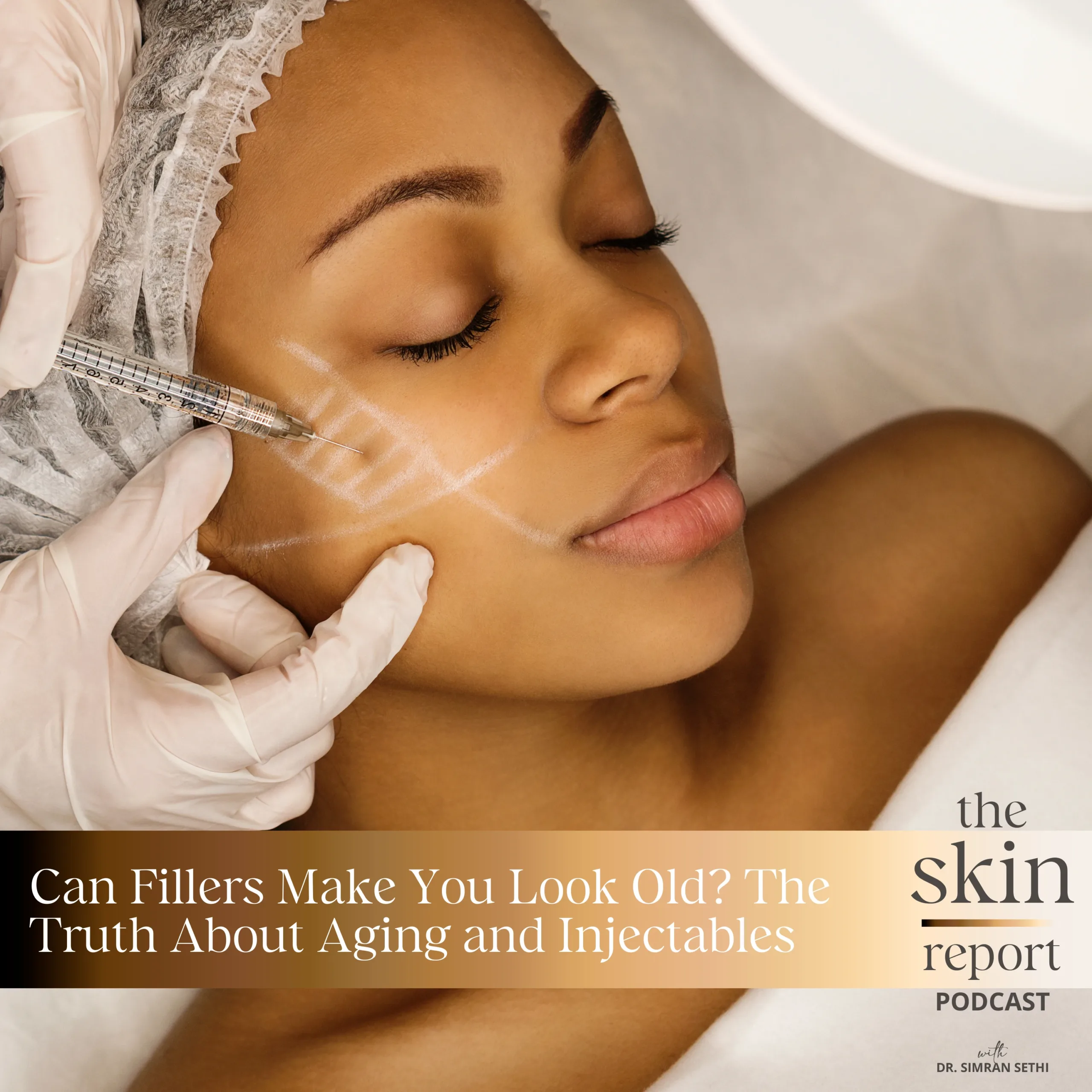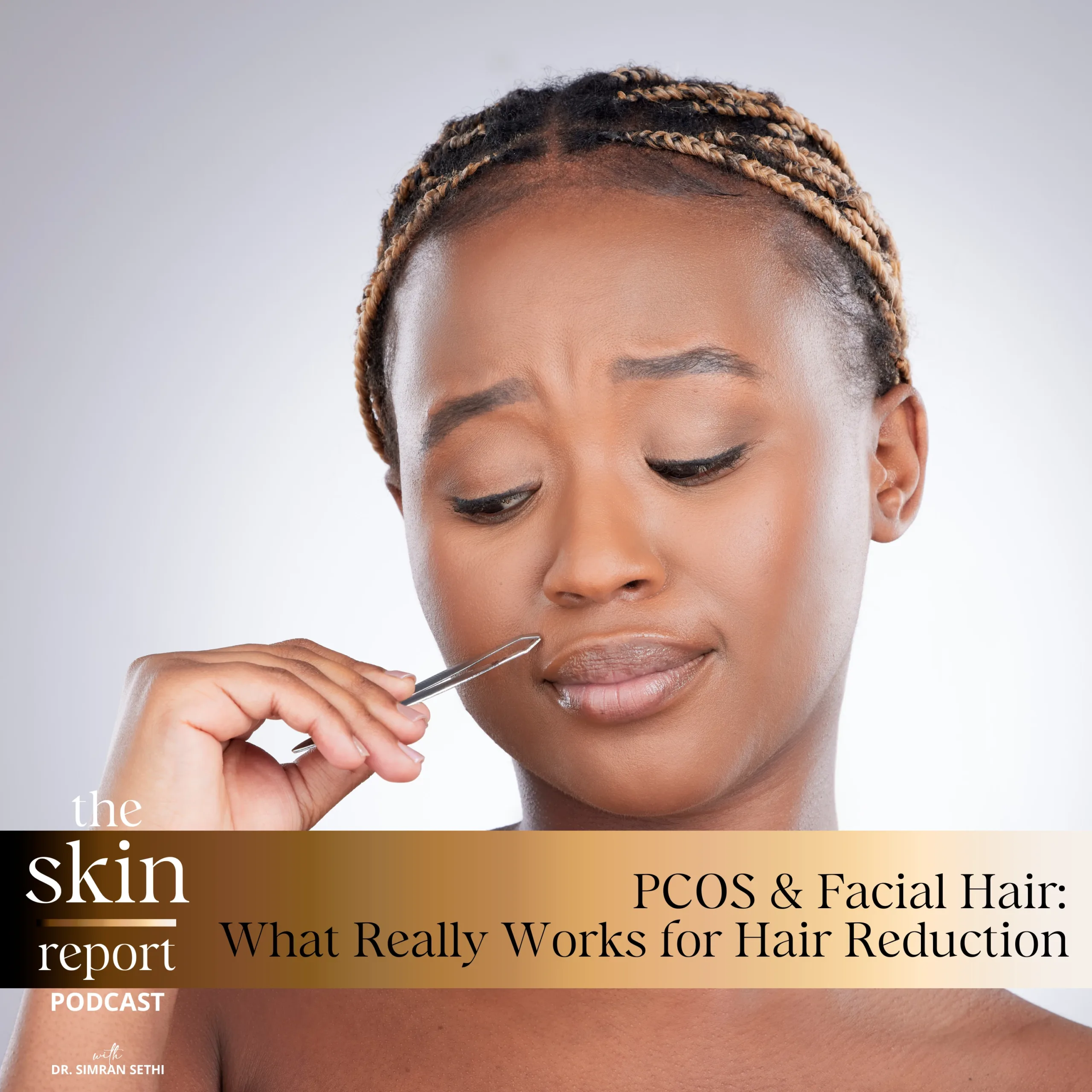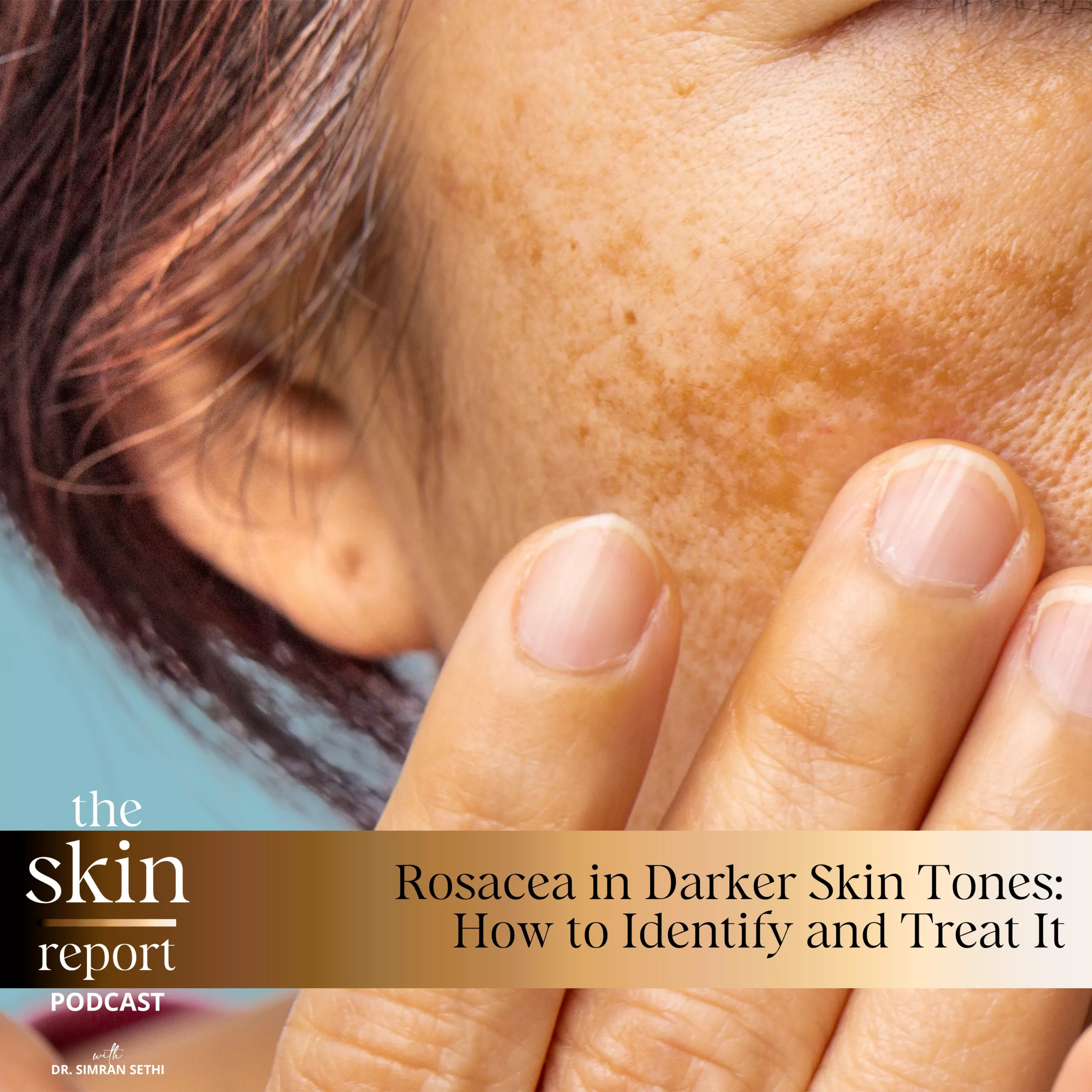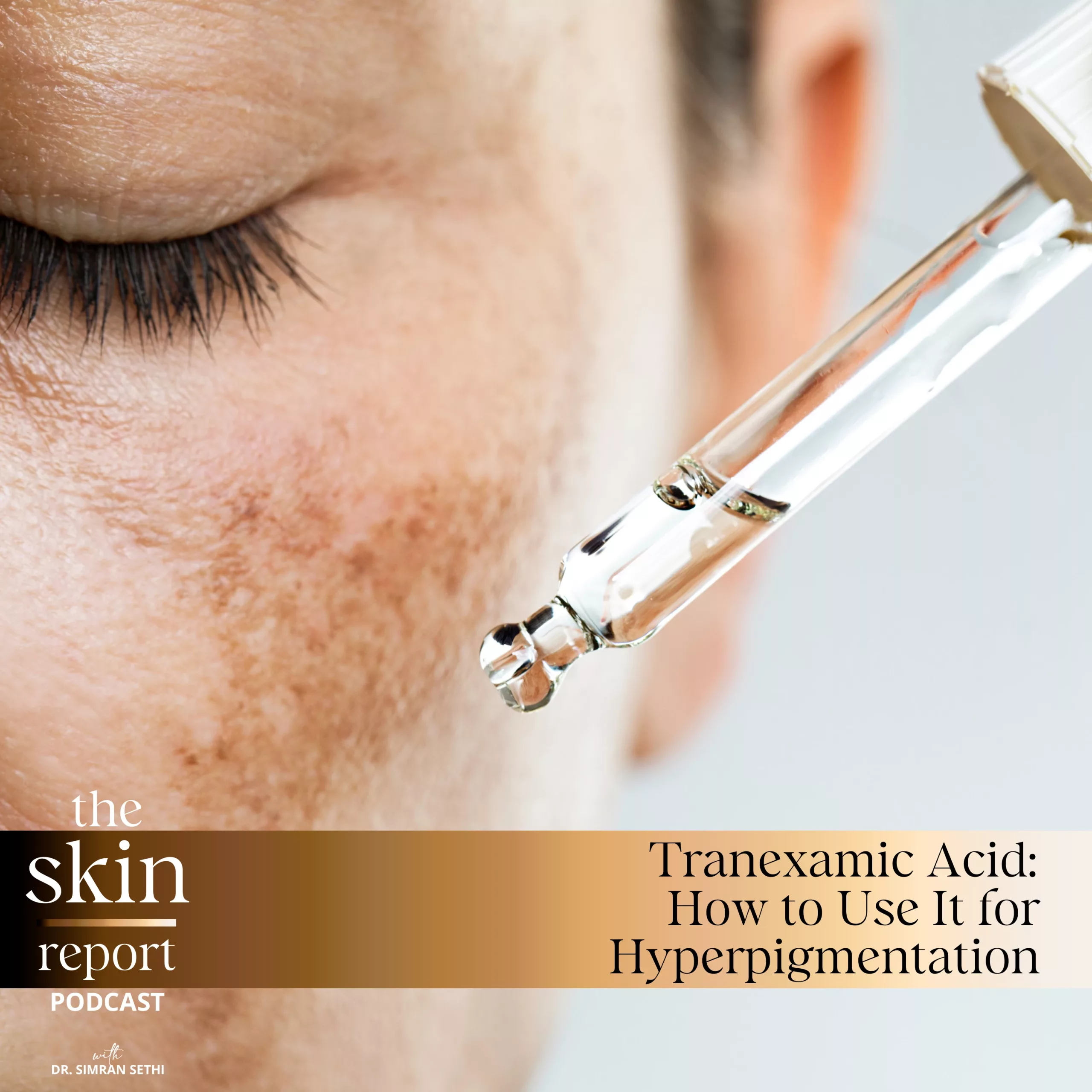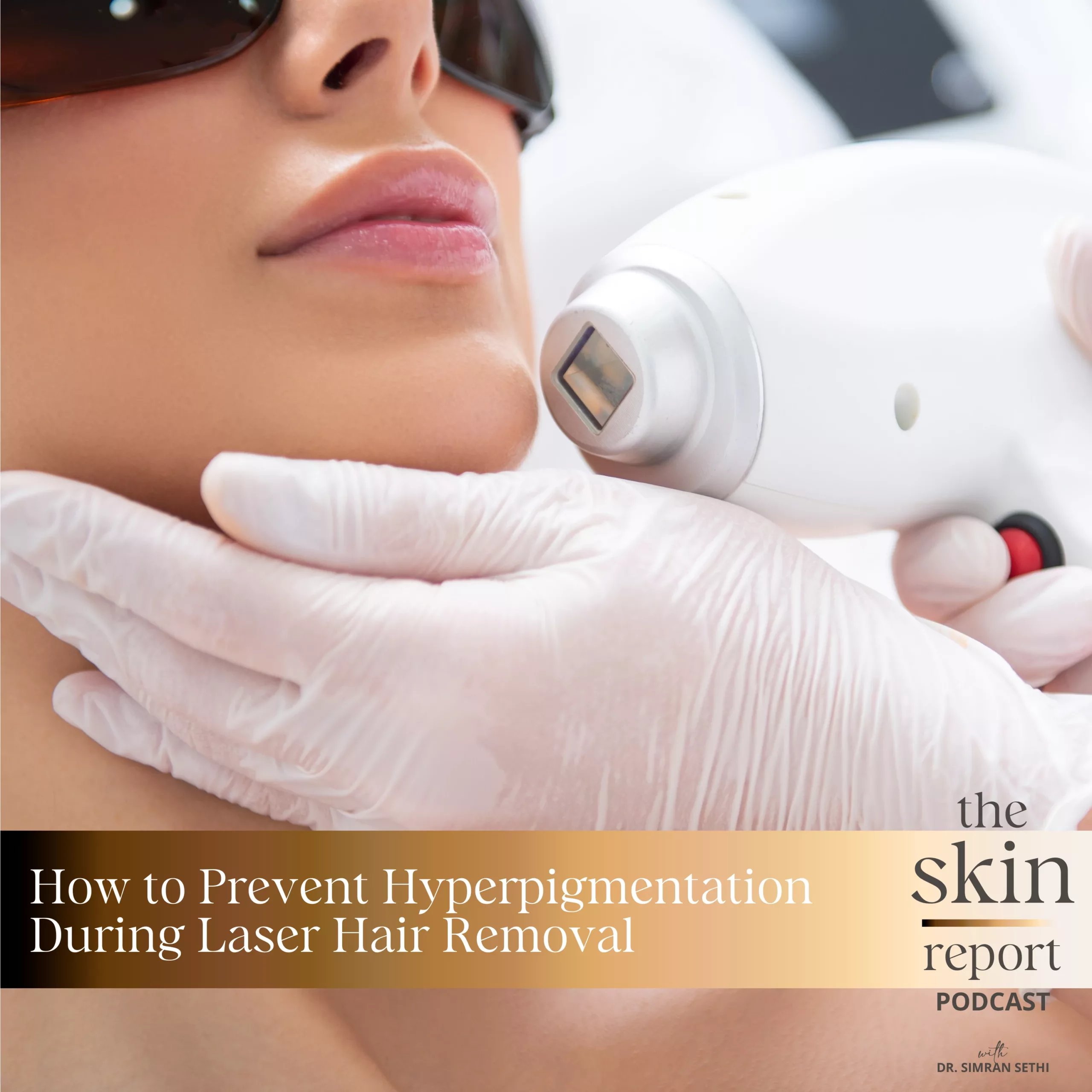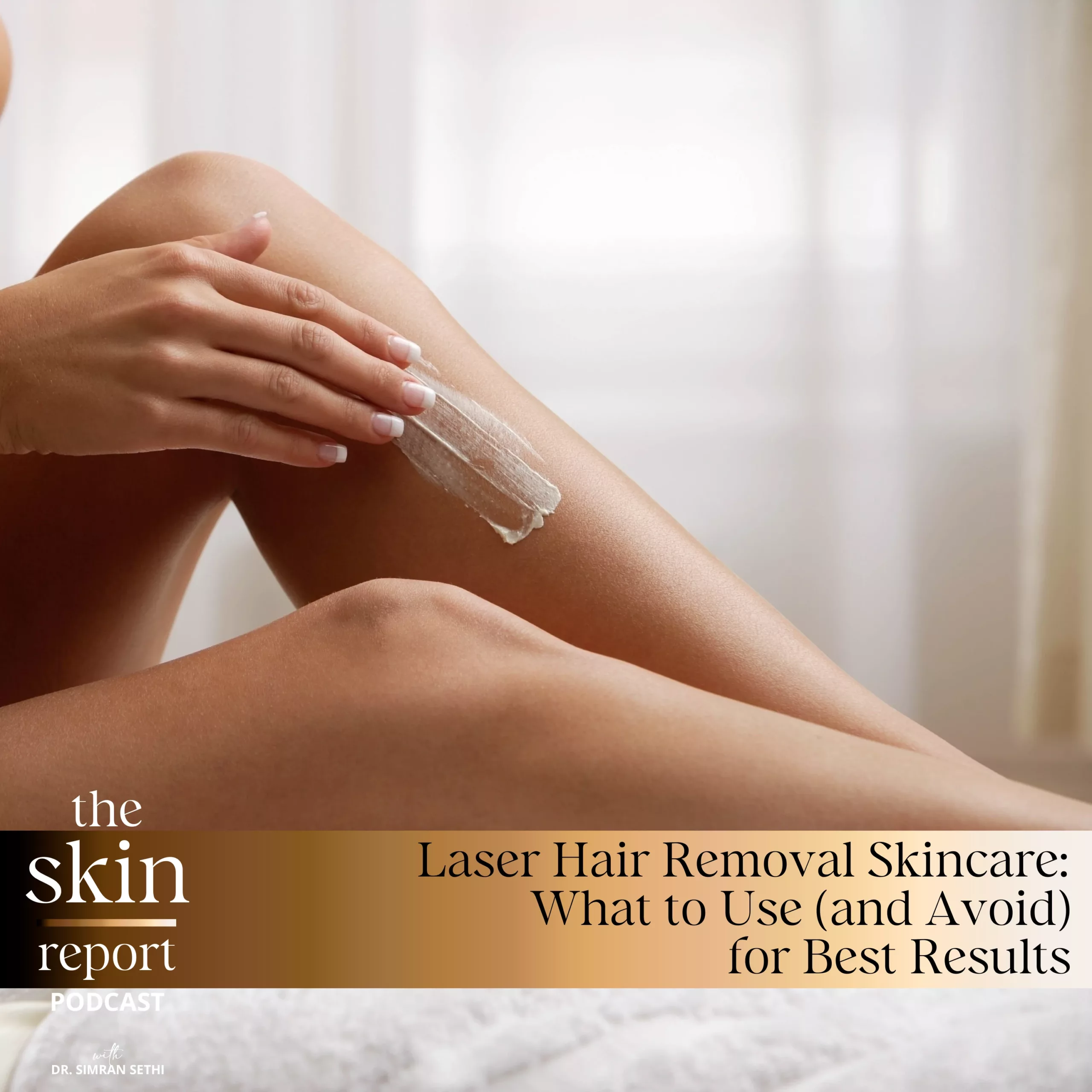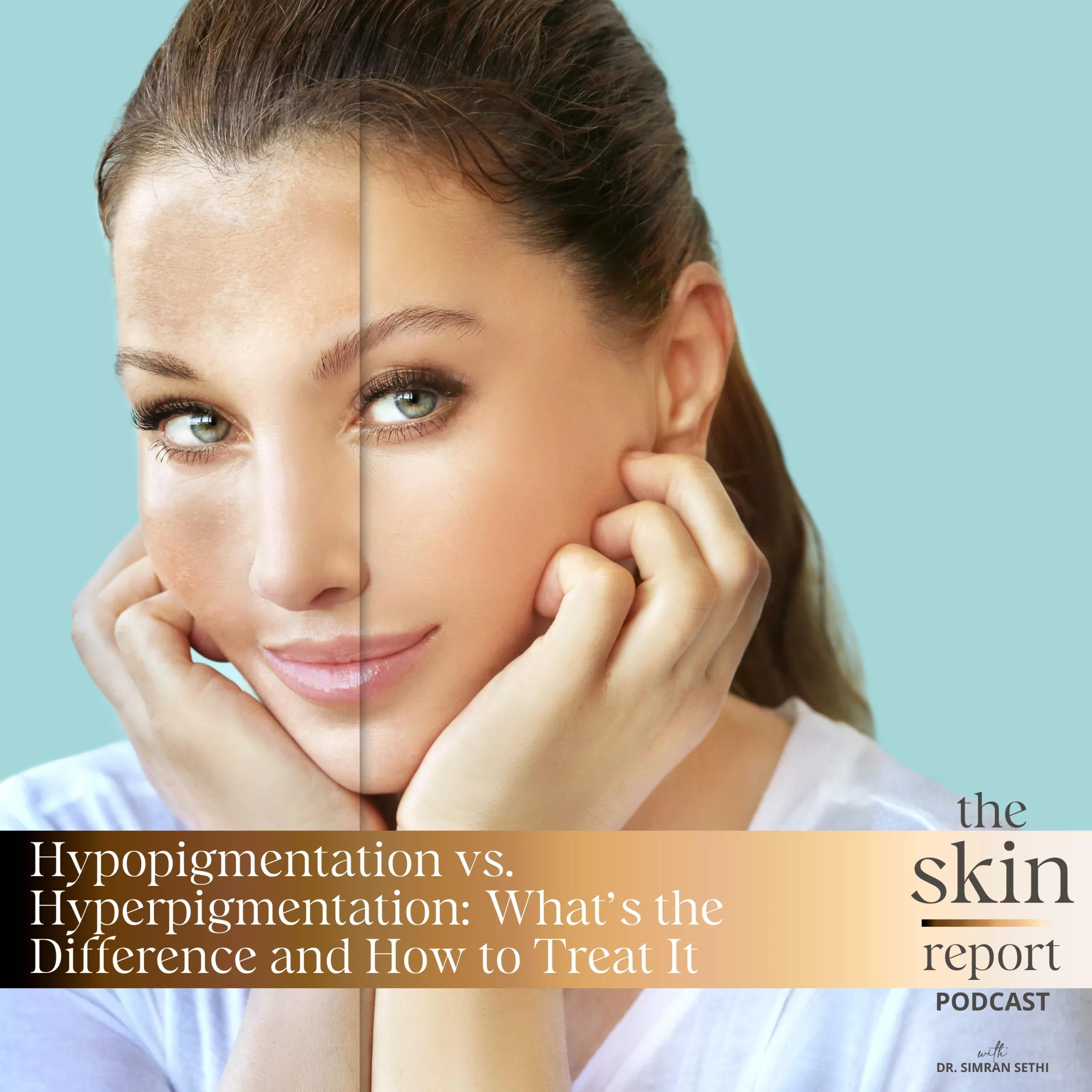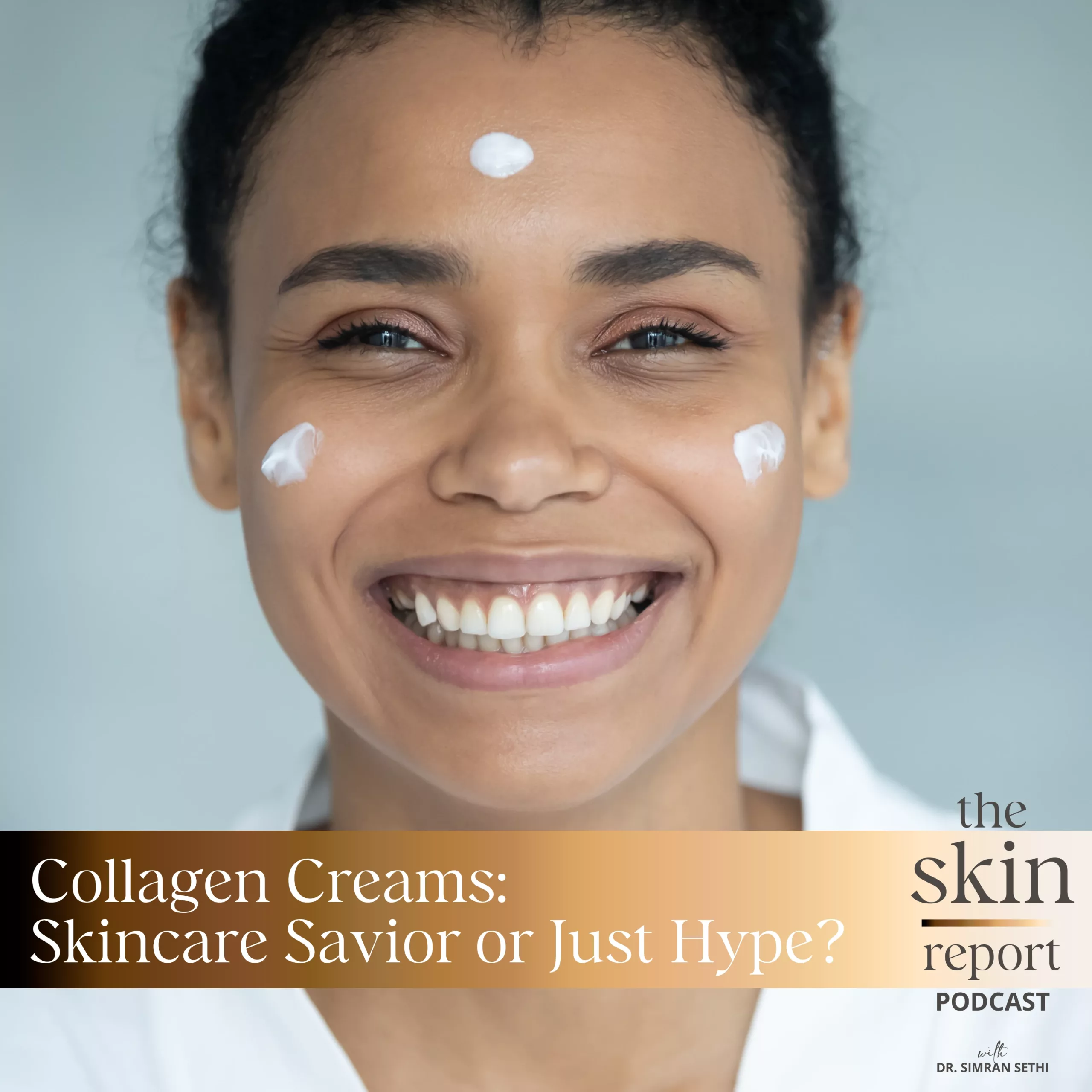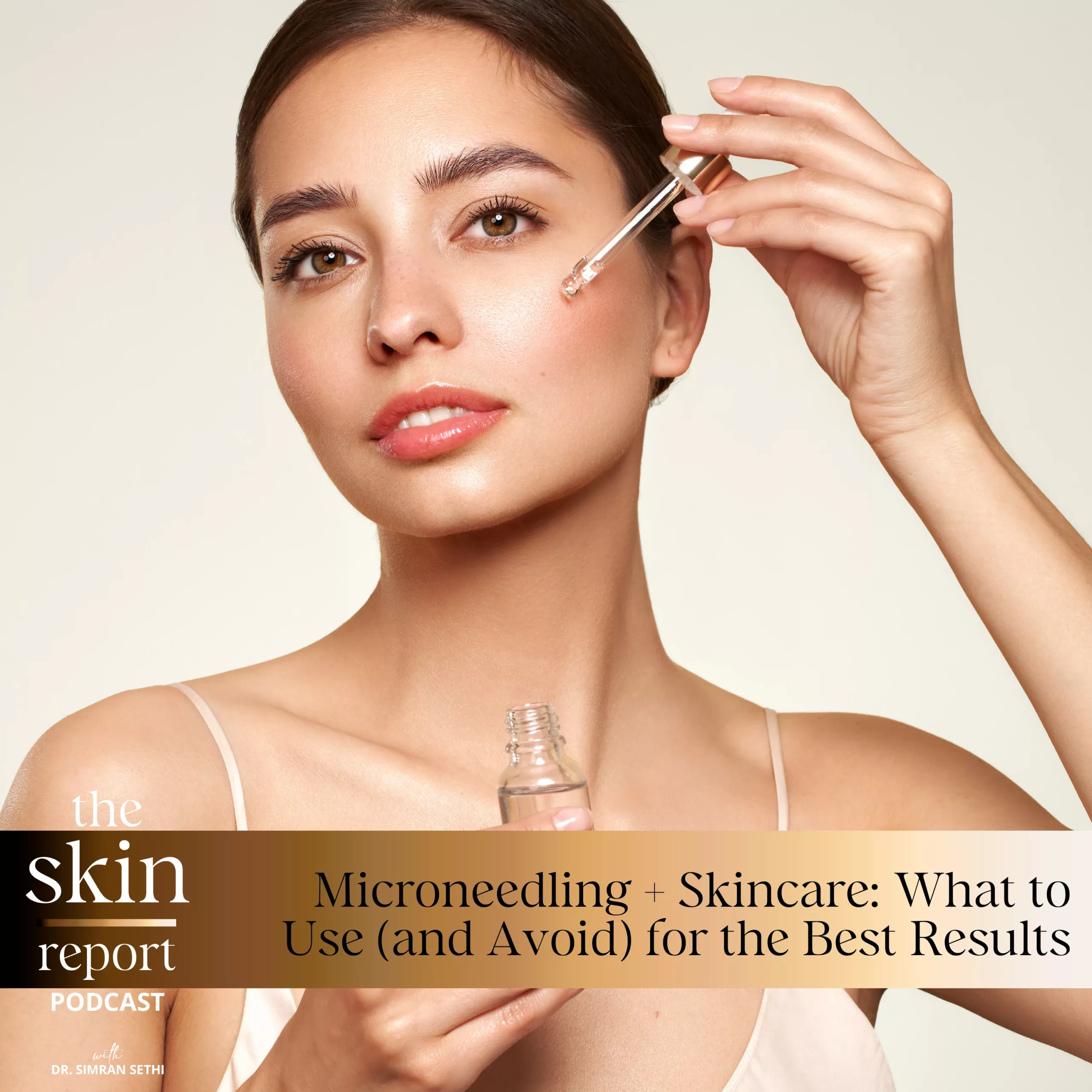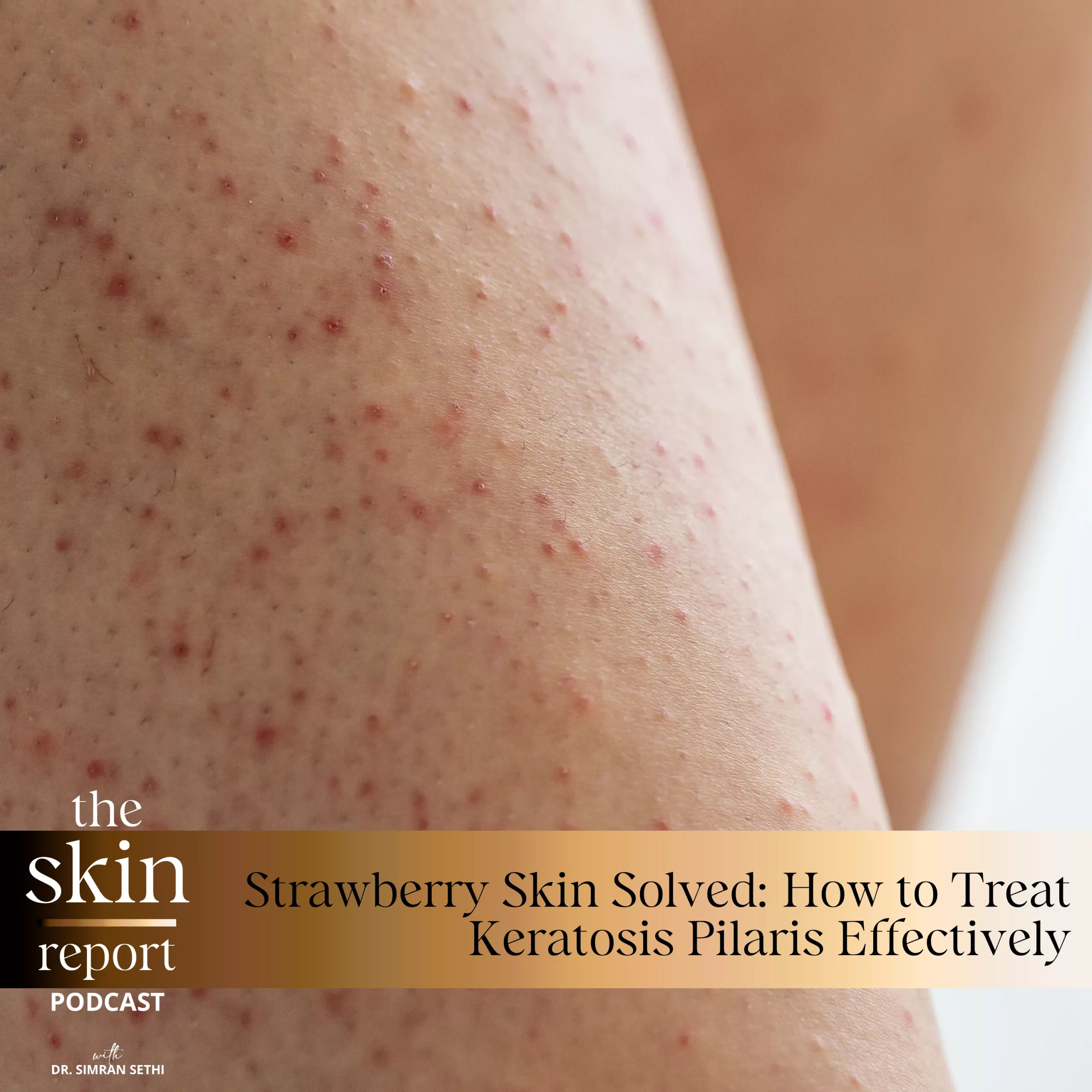Doctors Guide to
Healthy Fats for Your Skin
We often consider fats to be dangerous for our physical health. However, there are healthy fats that, when used appropriately, can positively impact the health and appearance of our skin!
In this episode, host Dr. Sethi discusses how people can apply healthy fats within their dietary habits and topical skincare routines to boost the health and radiance of their skin. She teaches listeners about the fats that are good for the skin when included in our diet or applied directly to the skin. Incorporating lipids within our skincare in the form of healthy skin oils can penetrate the skin’s surface and deliver nourishment deep within its layers. At the same time, healthy dietary fats like unsaturated fats can enable our bodies to enhance our skin’s health. Of course, not all fats are healthy, and this episode will help you to choose the right fats to nourish and replenish your skin!
As the founder of RenewMD Beauty Medical Spas and a woman of color, Dr. Sethi is dedicated to spreading science-backed skincare information on The Skin Report. Listen to this episode to learn more about healthy fats to nourish your skin!
Follow and DM a question for Dr. Sethi to answer on The Skin Report Podcast:
Renew Beauty Instagram:
https://www.instagram.com/renewmd_beauty/
RenewMD Beauty Medical Spas, California:
https://renewmdwellness.com/
Dr. Sethi on TikTok:
@SkinByDr.Sethi
https://skinbydrsethi.com/products/retinol-lipid-complex?_pos=1&_psq=retinol&_ss=e&_v=1.0
The Skin Report Podcast – Season 1 Episode 15
https://theskinreportbydrsethi.com/season-1-episode-15-coconut-oil-helpful-harmful/
The Skin Report Podcast – Season 3 Episode 10
https://theskinreportbydrsethi.com/season-3-episode-10-a-refresh-on-diets-and-skincare/
National Library of Medicine – Biochemistry, Lipids
https://www.ncbi.nlm.nih.gov/books/NBK525952/
National Library of Medicine – Analysis of the effects of dietary fat on body and skin lipids of hamsters by Raman spectroscopy
https://pubmed.ncbi.nlm.nih.gov/25920444/
National Library of Medicine – Omega-3 Versus Omega-6 Polyunsaturated Fatty Acids in the Prevention and Treatment of Inflammatory Skin Diseases
https://www.ncbi.nlm.nih.gov/pmc/articles/PMC7037798/
American Heart Association
https://www.heart.org/en/healthy-living/healthy-eating/eat-smart/fats/saturated-fats
Healthline – Can High Cholesterol Affect Your Skin?
https://www.healthline.com/health/high-cholesterol/cholesterol-symptoms-on-the-skin#symptoms
National Library of Medicine – Age and ethnic variations in sebaceous lipids
https://www.ncbi.nlm.nih.gov/pmc/articles/PMC3772921/
Skin Barrier Repair Kit – Special Offer 20% off Promo Code: skinbarrier20
Skin By Dr. Sethi – 15% OFF for new customers: GLOW15
Valentines Day Special – 20% OFF Systems and Bundles + FREE Mystery Gift: VDAYGLOW20
This transcript was exported on February 12, 2024 -view latest version here.
Skincare can sometimes feel overwhelming, whether it’s finding the right products, ingredients, or treatments, there’s a lot out there, but not always for people of African, Hispanic, Middle Eastern and Eastern South Asian descent. That’s why I set out to educate myself and others so that we can all feel beautiful in our skin. Hello and welcome back to the Skin Report. I’m Dr. Simran Sethi, an internal medicine doctor, mom of three and CEO and founder of Renew MD Medical Spas and Skin by Dr. Sethi.
In the first part of our two-episode series on how fat benefits the skin, we covered why subcutaneous fat is important to give our skin bounce, projection and lift. Maintaining this layer of fat is crucial for supporting the health of your skin, the skin barrier, and your individual skin cells. Today I want to continue the conversation by discussing how adding healthy fats within both your skincare routine and your diet can nourish your skin cells and support a natural glow. But before we dive into this topic further, it’s important to remember that not all fats are created equal. By this I mean that when it comes to skincare, fats are not completely good or bad, and therefore there can be a little bit of confusion around which fats are good for your skin and how they should be used to support your skin’s health. So in this episode, I’ll be going over which fats should be part of your skincare and your diet.
Let’s begin by discussing why it’s so beneficial to incorporate fats in our skincare. Fats or lipids are essential for our skin’s function on a cellular level, they support the structure and resilience of our skin cells thanks to their presence within our cell membranes. Think of the cells in your body. If your cell walls were rigid, they would not have the ability to move, expand, and shrink as all cells must for water to flow in and out of them. Instead, a rigid cell wall would cause the cell to break if it expanded or shrunk. Instead, our cell membranes contain lipids which allow the cell wall to become fluid and unbreakable. At a macro level, our skin requires these lipids who support the cell structure. Furthermore, phospholipids are also necessary within cell membranes to provide protection and act as an obstruction to certain molecules. For these reasons, lipids are essential for optimal skin cell health.
So what are some ways that you can incorporate lipids topically within your skincare routine? Well, healthy skin oils can be used to not only moisturize the skin, but also to remove makeup and cleanse the skin’s surface. Today you can find a variety of skin oil products just by looking through social media ads, drugstore shelves and skincare retail websites. These products are generally formulated for topical use and advertised as being safe and beneficial for skin. In fact, many of them contain natural oils that have been utilized since ancient times, which can influence people into trusting their beneficial claims. You may have even noticed some skincare influencers creating sponsored ads for these products or alternatively even sharing how they achieve these skin oil effect using simple ingredients found in their own kitchens. It’s no secret that oils are gaining traction in the skincare community, but you may be wondering, are these oils actually beneficial for your skin?
The answer to this is dependent on the type of oil being discussed and its ability to penetrate the skin’s layers to deliver nourishment beneath its surface. We’ll cover this topic of healthy versus unhealthy skincare oils further, coming up next. Before we take a closer look at the benefits of different oils, let’s go over some lipid basics with a quick vocab lesson. Throughout this episode, I’ll be using the terms lipids, triglycerides, fats and oils. Lipids are molecules that are essential to various bodily functions. Lipid is often used as an umbrella term to describe a broad group of organic compounds that can be found in living cells. Triglycerides are a type of lipid and are composed of glycerol and three fatty acids. While triglycerides can be found in the blood, we commonly call the triglycerides in our food fats and oils. Fats and oils are both lipids as they exist in different forms.
When lipids are their solid state at room temperature, they’re generally referred to as whereas oils are what we call lipids in their liquid state. Got it? Excellent. Now let’s talk about what factors would make a certain type of oil beneficial in a skincare routine. Being that oils are lipids in liquid form, different oils can have varying molecular weights or sizes. Oils with large molecular weights are not able to penetrate into the skin and therefore are unable to deliver any real benefit to the skin’s health. Unfortunately, these heavier oils like coconut oil and mineral oil are commonly utilized in skincare practices. For more information on large molecular weight oils in topical skincare use, let’s refer back to an episode from the very first season of the Skin Report where we looked at coconut oils used in skincare. As a skincare professional, I have seen countless issues in many different skin types that were caused by the direct application of coconut oil to the skin.
When coconut oil is applied topically to the skin’s surface, it can block the pores causing the formation of blackheads and acne. Coconut oil is comedogenic, which is a descriptor for a substance that when applied directly to the skin can cause comedones, otherwise known as clogged pores. The fact that coconut oil is a comedogenic substance is a significant contributor to its criticism as a skin care element. We can look to coconut oil’s molecular makeup as the reason behind this undesirable effect on the skin when directly applied. Coconut oil has a large molecular weight which makes it difficult to absorb into the skin. Instead, this causes it to remain on the skin surface where it can mix with dirt and debris often resulting in clogged pores. While heavy molecular weight oils like coconut oil and mineral oil should never be applied topically in their natural state. Oils with smaller molecular weights can. Phosphoric glycolipids or lipids with small molecular weights that are ideal to apply topically to the skin.
This is because they can easily penetrate the skin barrier and can be absorbed into the skin to strengthen it and give it fluidity. To help you understand, think of how smooth and supple leather becomes when you apply an oil to it compared to when it’s dry. Small molecular weight oils can have a similar hydrating and moisturizing effect on our skin when applied topically. Another important consideration when choosing a topical skin oil is a quality of the oil you’re using. Ensure that the oil you are applying is either formulated as skin care or is not mixed with any other oils like mineral oil. Mineral oil is very cheap to produce, so manufacturers can use it in conjunction with another oil to reduce the cost of the product. While incorporating healthy lipids can benefit anyone’s skincare regime, lipids are especially important skin components for people of color. Skin of color is highly prone to hyperpigmentation when there is any breakage of the skin barrier.
Fortunately, lipids are an essential part of the skin barrier health and are an equally important way to reduce hyperpigmentation. A skincare regime rich in nourishing vitamin E and lipids is the most successful way to reduce and prevent hyperpigmentation. To sum it all up, when choosing oils to incorporate into your skincare routine, you should look for low molecular weight oils. Additionally, oils that contain vitamin E can do wonders for smoothing and strengthening the skin barrier. Some great examples of low molecular weight, non-comedogenic oils that contain vitamin E include argan oil, rosehip oil, sweet almond oil, and neroli oil. I’m a huge fan of using phospholipids and glycolipids in my skincare product line Skin by Dr. Sethi. My retinol lipid complex is an example of a formulation that combines an active medical grade ingredient retinol with phospholipids to fight the dryness and skin barrier breakage that it normally causes.
Using a retinol alone can make skin very dry, flaky, and sensitive, and this effect often keeps people of color or anyone with drier, mature skin from trying it. But my retinol lipid complex doesn’t have this problem, thanks to the formula’s glycolipids, which work to prevent dryness and irritation. Before we move on, I want to share my thoughts on using oils for skin cleansing. Cleansing with oils is a huge TikTok trend and I like the idea of doing so with a couple caveats. Mainly when using an oil to cleanse with, I would recommend double cleansing. First, use the cleansing oil to remove the dirt and grease from the skin’s surface. After this cleanse once more. With a cleanser that contains an AHA or BHA to deep clean your pores, the oil cleansing alone cannot effectively clean pores, so using an AHA or BHA-based cleanser will help you cover all of your bases. Coming up, I’ll discuss how fats and lipids in the diet can improve your skin from the inside out.
I know that so many women who listen to our show are either close to or in menopause and are starting to experience changes in their skin, weight and sleep. As an internal medicine doctor and a woman in my forties, I know the importance of women optimizing their help during this hormonal transition through options like bioidentical hormone replacement therapy, our brand new sponsor, Winona, is here to help women who are dealing with menopause or perimenopause. Winona is a collection of OBGYN health professionals who believe that symptoms are important, real and deserve to be taken seriously.
Winona is the home for tradition-prescribed bioidentical hormone replacement therapy with an easy-to-use network of doctors based in your state who can make getting started with HRT increase. Winona’s bioidentical HRT is made from plant-based hormones rather than synthetic ones, so it aligns with your body’s natural rhythm to loss relief from hot flashes, weight gain, and other uncomfortable symptoms. 80% of women can use Winona find relief within just 90 days. Visit bywinona.com today to start your free visit with free US shipping and the ability to pause or cancel at any time your path to wellness at zero obligations. Use the code SKINREPORT bywinona.com for 25% off your first order. That’s B-Y-W-I-N-O-N-A.com/SKINREPORT.
Now that we’ve discussed the impact of lipids in skincare, let’s take a look inside at how dietary fats can impact our subcutaneous fat and our skin health. Our diets delivered nourishment to all parts of our body, including the skin. That said, our skin’s condition isn’t just dependent on what we apply topically, it’s also highly impacted by the nutrients that we consume. To help you understand how to make beneficial food choices for our skin health, let’s consider the affiliation between dietary fat and our skin’s overall wellness. Our body reacts to certain types of dietary fats differently. Whether dietary fats are saturated or unsaturated can determine the type of effect they may have on our skin’s health. Saturated fats can be sourced from animal products like dairy and red meat and are generally considered to be unhealthy fats. This is mostly due to saturated fats. Raising levels of LDL cholesterol in the blood as high LDL cholesterol levels can increase the risk of heart disease.
High cholesterol levels can also directly impact the skin. For example, it can lead to conditions like xanthomas where raised bumps filled with fatty deposits of cholesterol appear beneath the skin’s surface. Since saturated fats can produce these negative health effects, the American Heart Association recommends limiting them in your diet and aiming for a dietary pattern with only 5 to 6% of calories from saturated fat. On the other hand, unsaturated fats are the healthy choice when it comes to dietary fats. Unsaturated fats include both monounsaturated and polyunsaturated fats, omega-3 and omega-6 fatty acids. Omega-3 and Omega-6 polyunsaturated fatty acids are helpful for treating and preventing skin inflammation and maintaining the integrity of the skin’s lipid barrier as discussed in the PubMed article, Omega-3 versus Omega-5 Polyunsaturated Fatty Acids, and the prevention and treatment of Inflammatory skin diseases, and by supporting the skin’s lipid barrier, these fatty acids contribute to the skin’s hydration, bounce and resilience.
Still, not all unsaturated fats are ideal. Specifically I’m talking about the nutritional differences between omega-6 fatty acids versus omega-3 fatty acids. Omega-6 fatty acids are commonly found in vegetable oils, whereas omega-3 fatty acids are found in foods like fatty fish seeds and nuts. Now, this doesn’t mean that we should avoid omega-6 fatty acids entirely, but we should try to be mindful of our consumption of these fats and focus on incorporating more omega-3 fatty acids within our diets. All in all fats that have nutritional value for improving our skin’s health can also provide a variety of benefits for our overall physical wellness. Different fats can be more or less beneficial for our health and the sources of healthy fats can also be controversial. You can check out season three episode 10 of the Skin Report linked in the show notes to learn more about the schools of thought surrounding the health of different diets like the ketogenic, vegan and the Mediterranean diets.
I’ll give you my opinion here, which is that omega-3 fatty oils from nuts, seeds, and plants like avocado and olives are the best sources of lipids in your diet because they’re the cleanest whereas fat sourced from animals and fish can hold hormones, antibiotics and metals that are then carried over to our bloodstream when consumed. So when consuming meat, poultry, and fish, just be mindful of the sources as this greatly impact the quality of lipids and nourishment from consuming these sources. Finally, let’s take this topic full circle and touch on the importance of a balanced diet for maintaining healthy subcutaneous fat layers. Now, we know that as we grow older, we tend to see a decrease in our skin’s fat content. According to a study on age and ethnic variations in sebaceous lipids, this can be attributed to a decrease in the ability of our skin cells to synthesize and secrete fat as we age.
To counteract this, we must take a nutrient to support the fat that contributes to our skin’s youthful appearance.Results from an analysis of the effects of dietary fat on body and skin lipids of hamsters by Raman Spectroscopy even revealed that dietary fat intake is closely related to the lipid composition in body and skin tissues. This just goes to show how maintaining a diet of healthy fats can support our skin’s fat and its overall youthfulness. Overall, a balanced diet is essential in maintaining healthy skin. A balanced diet is one that is rich in healthy fats as well as the essential vitamins, minerals, and other dietary elements. This intake of nutrients will allow our skin to retain its healthy structure and beauty. As we learn about the science surrounding dietary fats, we can see just how significantly our dietary choices impact our skin’s wellness.
To summarize, we should aim to incorporate healthy fat and maintain a diet that is balanced and nutrient-rich. If we want to preserve our skin’s elasticity, youthful appearance, and healthy glow, and as we discussed earlier in the episode, the topical application of fats to our skincare routines can also improve our skin’s wellness, especially when this is applied alongside healthy dietary habits. Together, our external skincare practices and our healthy dietary habits can help us take a two-pronged approach to improving the look and feel of our skin. Thank you for listening in on this episode of the Skin Report Podcast, and until next time, love your skin, love yourself, and celebrate your beauty.
If you’d like to learn more about science-backed skincare or medical aesthetic treatments, please subscribe to and turn on notifications for the Skin Report so you always know when a new episode is up. We have a newsletter that you can sign up for on SkinbyDrSethi.com so that you can stay up to date on all our latest products and more. Additionally, if you have a skincare question or want to make an episode topic recommendation, please message me at the SkinReportbyDrSethi.com, which is linked in my show notes and I’ll be sure to answer your questions in an episode soon.
Transcript by Rev.com


